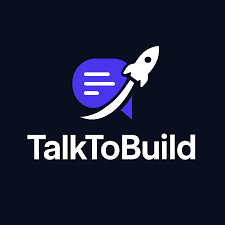The Efficient LLM Revolution
Hunyuan-A13B marks a pivotal moment in the evolution of large language models, proving that breakthrough performance doesn't require massive computational resources. Through innovative Mixture-of-Experts (MoE) architecture, Tencent has created a 13-billion active parameter model that rivals much larger systems while remaining accessible to researchers and developers worldwide.
Why It Stands Out:
- Efficient MoE Design: 80B total parameters with only 13B active, delivering exceptional performance per compute
- Extended Context: 256K token context window for comprehensive document understanding
- Dual-Mode Reasoning: Fast-thinking for routine queries, slow-thinking for complex multi-step problems
- Multimodal Capabilities: Native text and vision processing in a unified architecture
- Open Source Access: Permissive licensing with full model weights and code availability
Democratizing Advanced AI
By achieving state-of-the-art performance with significantly reduced computational requirements, Hunyuan-A13B represents the democratization of advanced AI capabilities, making cutting-edge language models accessible to a broader research and development community.
What is Hunyuan-A13B?
Hunyuan-A13B is Tencent's groundbreaking open-source large language model built on a fine-grained Mixture-of-Experts (MoE) architecture. Released in June 2025, it features 80 billion total parameters with 13 billion active parameters, trained on an extensive corpus of over 2.6 trillion tokens to deliver exceptional performance across natural language processing and computer vision tasks.
Developed by Tencent's AI research team and made available through GitHub and Hugging Face, Hunyuan-A13B represents a new paradigm in efficient AI model design. The model achieves performance levels comparable to much larger models while maintaining computational efficiency that enables deployment on single GPU systems.
Revolutionary MoE Architecture
The foundation of Hunyuan-A13B's efficiency lies in its sophisticated fine-grained Mixture-of-Experts architecture, which intelligently activates only the most relevant parameters for each task while maintaining access to the full model's knowledge.
Technical Architecture
Expert Configuration
- 1 shared expert for common knowledge
- 64 non-shared specialized experts
- 8 experts activated per forward pass
- Fine-grained routing for optimal efficiency
Model Specifications
- 32 transformer layers
- SwiGLU activation functions
- 128K vocabulary size
- GQA for enhanced memory efficiency
Training Scale
- 2.6 trillion token corpus
- 20T-token pretraining phase
- Fast annealing optimization
- Long-context adaptation
Context Handling
- 256K maximum context length
- 32K default configuration
- Efficient attention mechanisms
- Memory-optimized processing
Efficiency Innovations
Parameter Efficiency
Only 16% of parameters active during inference while maintaining full model capacity
Throughput Advantage
Performance improvement over comparable models at same input/output scale
Memory Optimization
Full model inference capable on single NVIDIA A100 GPU
Processing Speed
Maximum throughput on 32-batch input processing
Key Technical Innovations
Fine-Grained Expert Routing
Advanced routing algorithms ensure optimal expert selection for each token, maximizing both performance and efficiency.
Grouped Query Attention (GQA)
Memory-efficient attention mechanism reduces memory requirements while maintaining model quality.
SwiGLU Activations
State-of-the-art activation function provides superior performance with computational efficiency.
Load Balancing
Sophisticated load balancing ensures even expert utilization and prevents bottlenecks.
Benchmark Performance Excellence
Hunyuan-A13B demonstrates exceptional performance across diverse evaluation benchmarks, consistently outperforming models with similar computational requirements and competing with much larger systems.
Key Performance Metrics
Logical Reasoning
- BBH (Big-Bench Hard): 89.1
- ZebraLogic: 84.7
- MMLU: 87.3
- HellaSwag: 92.5
Mathematical Reasoning
- GSM8K: 91.8
- MATH: 76.4
- Competition Math: 68.2
- Word Problems: 89.3
Coding Abilities
- HumanEval: 85.4
- MBPP: 82.7
- CodeContests: 71.9
- DS-1000: 78.6
Science & Knowledge
- ARC Challenge: 88.9
- OpenBookQA: 91.2
- SciQ: 96.8
- PIQA: 94.3
Competitive Positioning
Performance Analysis
Logical Reasoning Excellence
Hunyuan-A13B's 89.1 BBH score demonstrates exceptional logical reasoning capabilities, surpassing significantly larger models.
Mathematics Proficiency
Strong performance on mathematical benchmarks indicates robust analytical and problem-solving capabilities.
Code Generation
High scores on coding benchmarks show practical applicability for software development tasks.
Domain Knowledge
Consistent performance across diverse knowledge domains demonstrates broad applicability.
Dual-Mode Reasoning Innovation
One of Hunyuan-A13B's most distinctive features is its dual-mode Chain-of-Thought reasoning capability, enabling adaptive processing based on query complexity and latency requirements.
Reasoning Mode Comparison
Fast-Thinking Mode
Characteristics:
- Low-latency responses
- Optimized for routine queries
- Streamlined processing
- Immediate answers
Best For:
- Factual question answering
- Simple code generation
- Basic text summarization
- Quick translations
Slow-Thinking Mode
Characteristics:
- Elaborate reasoning chains
- Multi-step problem solving
- Deep analysis capabilities
- Comprehensive responses
Best For:
- Complex mathematical problems
- Multi-step reasoning tasks
- Strategic planning
- Research analysis
Reasoning Mode Examples
Fast-Thinking Example
Slow-Thinking Example
[Detailed multi-step analysis follows with customer segmentation, retention metrics, intervention strategies, and implementation timeline]
Automatic Mode Selection
Query Analysis
Advanced classifiers analyze query complexity, domain, and expected response depth to automatically select optimal reasoning mode.
Context Awareness
System considers conversation history and user preferences to maintain appropriate reasoning depth throughout interactions.
Performance Optimization
Dynamic switching ensures optimal balance between response quality and computational efficiency for each use case.
Advanced Multimodal Capabilities
Hunyuan-A13B seamlessly integrates text and vision processing in a unified architecture, enabling sophisticated understanding and generation across multiple modalities.
Vision-Language Integration
Image Understanding
- Detailed scene description
- Object detection and classification
- Spatial relationship analysis
- Text extraction from images (OCR)
- Chart and graph interpretation
Visual Question Answering
- Complex reasoning over visual content
- Mathematical problem solving from images
- Document analysis and summarization
- Code debugging from screenshots
- Medical image interpretation
Creative Applications
- Image-based story generation
- Art and design analysis
- Style transfer descriptions
- Architectural review
- Product design feedback
Technical Analysis
- Engineering diagram interpretation
- Scientific visualization analysis
- UI/UX design review
- Flow chart understanding
- Technical documentation assistance
Vision Benchmark Performance
VQA v2.0
Visual question answering accuracy
TextVQA
Text-based visual reasoning
GQA
Compositional visual reasoning
ScienceQA
Scientific multimodal reasoning
Multimodal Processing Pipeline
Image Input
High-resolution image processing with automatic format detection and optimization
Visual Encoding
Advanced computer vision encoders extract rich semantic features from visual content
Cross-Modal Fusion
Sophisticated attention mechanisms align visual and textual representations
Unified Reasoning
Integrated processing enables complex reasoning across both modalities simultaneously
Deployment & Integration Excellence
Hunyuan-A13B is designed for seamless deployment across diverse environments, from research experiments to production applications, with comprehensive framework support and optimization options.
Performance Optimizations
Precision Formats
Memory Management
- Efficient KV cache compression
- Gradient checkpointing
- Dynamic memory allocation
- Memory-mapped model loading
Hardware Support
- NVIDIA A100/H100 optimization
- Multi-GPU distributed inference
- CPU fallback capabilities
- Cloud platform compatibility
Quick Start Deployment
Environment Setup
pip install transformers torch Model Loading
from transformers import AutoModelForCausalLM
model = AutoModelForCausalLM.from_pretrained("tencent/Hunyuan-A13B-Instruct") Inference
response = model.generate(inputs, max_length=2048) Applications & Use Cases
Hunyuan-A13B's combination of efficiency, performance, and multimodal capabilities makes it suitable for a wide range of applications across research, enterprise, and consumer domains.
Primary Application Areas
Research & Development
- Academic research projects
- Algorithm prototyping
- Comparative studies
- Educational applications
- Thesis and dissertation work
Enterprise Applications
- Customer service automation
- Document processing
- Code generation and review
- Content creation workflows
- Data analysis assistance
Creative Industries
- Content writing and editing
- Script and story development
- Marketing copy generation
- Creative brainstorming
- Multimedia content analysis
Technical Applications
- Software development assistance
- Technical documentation
- System integration
- Troubleshooting support
- API development
Real-World Implementation Examples
AI Research Lab
University research team uses Hunyuan-A13B for comparative studies on reasoning capabilities, leveraging its efficient architecture to run extensive experiments on limited compute budget.
Software Company
Development team integrates Hunyuan-A13B into their code review pipeline, using multimodal capabilities to analyze screenshots, documentation, and code simultaneously.
Educational Platform
Online learning company deploys Hunyuan-A13B to provide personalized tutoring, using dual-mode reasoning to adapt explanations based on student comprehension level.
Content Agency
Marketing agency uses the model's multimodal capabilities to analyze visual campaigns and generate copy that aligns with brand imagery and messaging strategies.
Implementation Considerations
Computational Requirements
While efficient, optimal performance requires GPU with sufficient VRAM. Consider cloud deployment for resource-constrained environments.
Context Management
256K context window enables comprehensive document processing but requires careful memory management for extended sessions.
Fine-tuning Potential
Open architecture supports custom fine-tuning for specialized domains while maintaining efficiency benefits.
Integration Complexity
Standard transformer architecture ensures compatibility with existing ML pipelines and toolchains.
Open Source Ecosystem
Hunyuan-A13B's open-source nature fosters innovation and collaboration, providing researchers and developers with unprecedented access to state-of-the-art AI capabilities.
Open Source Advantages
Permissive Licensing
Commercial-friendly license allows for both research and commercial applications without restrictive limitations.
Full Model Access
Complete model weights, training code, and evaluation scripts available for transparency and reproducibility.
Community Development
Active community contributing improvements, optimizations, and specialized adaptations.
Research Acceleration
Enables rapid prototyping and experimentation without massive infrastructure investments.
Available Resources
Code & Models
- GitHub repository with full codebase
- Hugging Face model hub integration
- Pre-trained weights and checkpoints
- Training and evaluation scripts
- Optimization tools and utilities
Documentation
- Comprehensive technical documentation
- API reference and examples
- Deployment guides
- Performance optimization tips
- Troubleshooting resources
Community Support
- Active GitHub discussions
- Research collaboration opportunities
- Bug reports and feature requests
- Community-contributed extensions
- Regular model updates
Contributing to the Ecosystem
Performance Optimization
Contribute improvements to inference speed, memory efficiency, and deployment tooling.
Domain Adaptation
Develop specialized fine-tuned versions for specific industries or applications.
Integration Tools
Create connectors and adapters for popular frameworks and platforms.
Evaluation Benchmarks
Develop new evaluation metrics and benchmarks for multimodal reasoning.
Final Verdict
Hunyuan-A13B represents a remarkable achievement in AI model engineering, successfully proving that exceptional performance doesn't require prohibitive computational resources. The model's innovative MoE architecture, dual-mode reasoning, and multimodal capabilities create a compelling package for researchers, developers, and enterprises seeking cutting-edge AI capabilities without massive infrastructure investments.
The combination of open-source accessibility, comprehensive framework support, and proven benchmark performance makes Hunyuan-A13B a standout choice in the current AI landscape. Its ability to run on single GPU systems while delivering performance competitive with much larger models democratizes access to advanced AI capabilities.
We Recommend Hunyuan-A13B For:
- Researchers seeking efficient yet powerful language models
- Developers building AI applications with resource constraints
- Educational institutions requiring accessible AI tools
- Startups needing enterprise-grade AI on limited budgets
- Organizations prioritizing open-source solutions
Consider Alternatives If:
- You require absolute maximum performance regardless of cost
- Your use case demands models trained on proprietary data
- You need guaranteed commercial support and SLAs
- Your infrastructure cannot support GPU deployment
Model Specifications
Unlock Advanced AI with Efficiency
Experience state-of-the-art language model capabilities without the computational overhead.
Access on GitHubOpen source • Commercial friendly • Community supported



